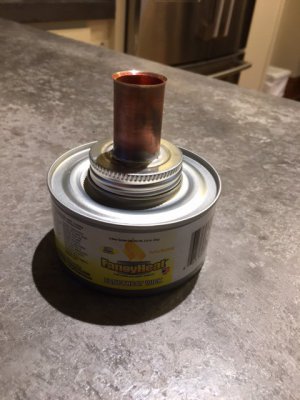- Joined
- Oct 19, 2020
- Messages
- 158
Well, I am to the point to where I figure there is nothing to it but to do it with my new-to-me lathe. So in the process of trying to flare a 3/4 inch copper pipe for a Mr. Pete style cutting oil can, I noticed that my apron can be lifted about 1/8 inch off of the ways. (please don't ask me to explain). I am just wondering if that is normal. I will grant you that my flaring technique was most likely not by the book. I am thinking that in normal lathe operation, the apron is forced against the ways so the fact that I am able to lift it a small amount is not an issue. Any wisdom? BTW, I have attached a pic of my finished cutting oil can.
att
att


